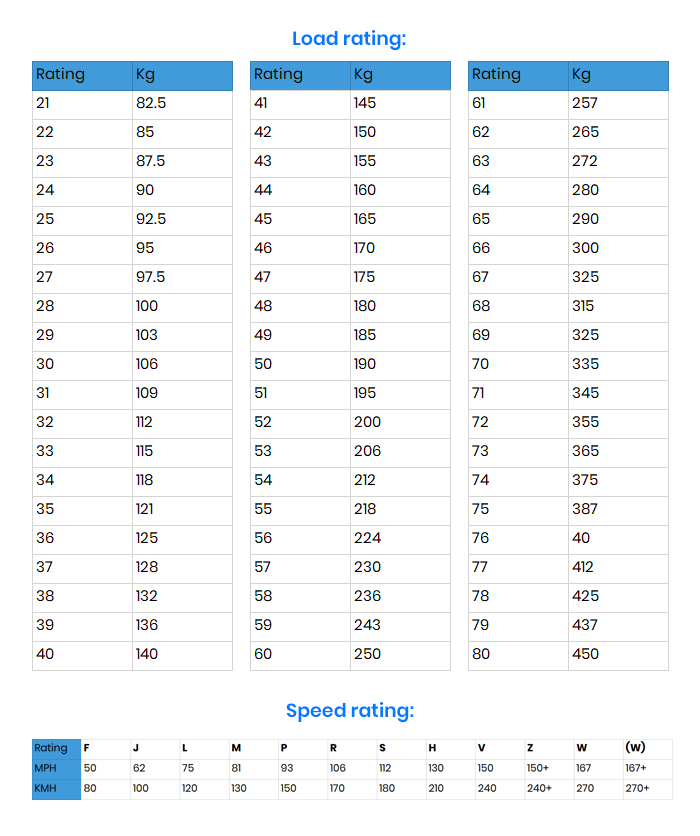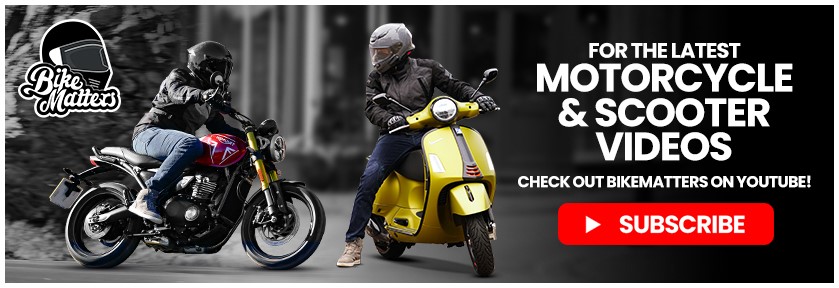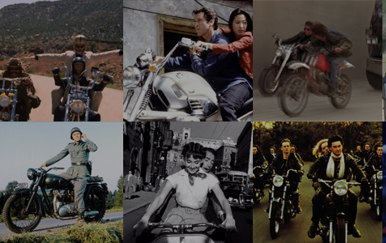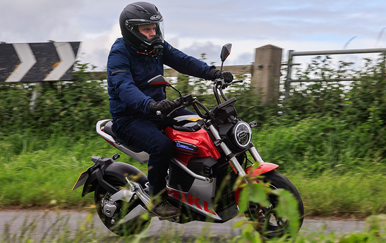One of the most important parts of your motorcycle or scooter are its tyres. These are the only points of contact with the road and can have a surprisingly big impact on the way your machine handles and the roles it can perform.
In this blog I am going to give a basic overview on some of the different types of motorcycle tyres available as well as a few guidelines on maintenance, when it’s time to make a change and how to understand the information on your tyre's sidewall.
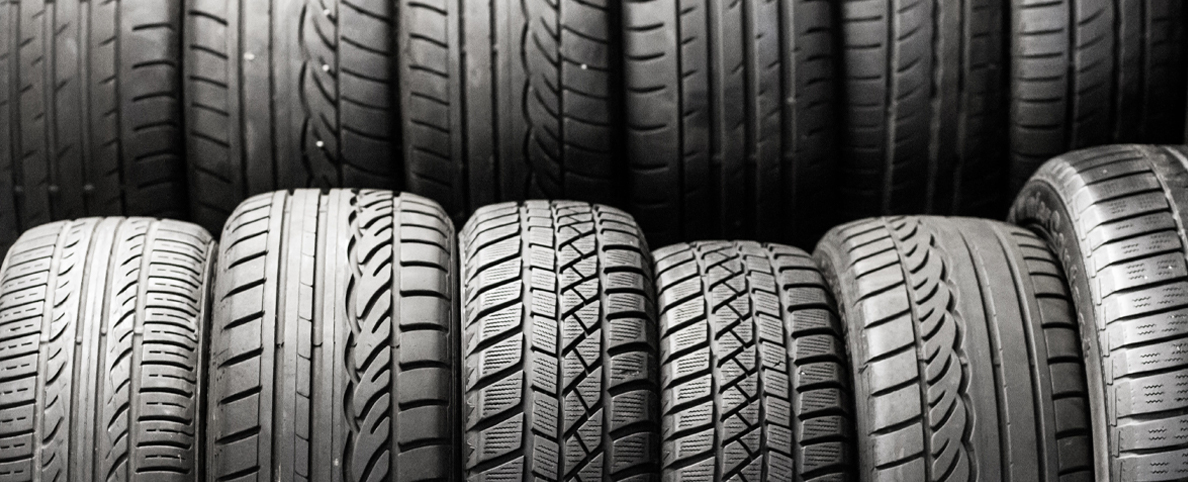
Yes, these are not motorcycle tyres. But the picture is nice so here we are.
Serving a purpose
As with almost any aspect of motorcycling, there is a large variety of different tyre types out there but it is not as scary as it might seem as the type of tyre you are after can be easily narrowed down.
For a start if you purchase a brand new bike or scooter, the manufacturer will already have fitted it with the tyres that best suit its intended purpose, whether that be touring, adventuring or street performance.
So, what is it that makes different tyres suited to different roles? Well its largely down to the way a tyre is constructed. The compounds used and the different tread patterns lend themselves to different conditions. For example, softer 'sticky' tyres are generally used for their high grip and excel on the race track. However, these tyres are designed for controlled flat environments which you will not find on the road and they perform badly when it is cold and wet as well.
If you are going touring on your motorcycle or scooter, then a harder tyre would be more suitable. These will perform better at lower temperatures, wear down more slowly and usually have tread patterns designed for better rain clearance in the wet.
Large knobbly tyres have become quite vogue on custom bikes these days but they are actually designed more for off-road and adventuring, dealing with uneven or muddy terrain, so if you are looking to use your bike primarily for road use you may be sacrificing some grip for fashion if you go that route. These days technology has advanced to the point where hybrid tyres are beginning to emerge that can actually fill a range of purposes too.
The most important thing to do if you are picking a new set of tyres is to be honest and decide what type of riding you will primarily be focused on and purchase tyres designed for that role.
Next up is the range of different sizes available. Once again this is quite straightforward - you should generally stick to the manufacturer's recommended sizes for your particular motorcycle or scooter. These have been specifically optimised to suit the weight and handling of the individual make and model you own. So, check your user manual, you can also get this information from the tyre itself but more on that later.
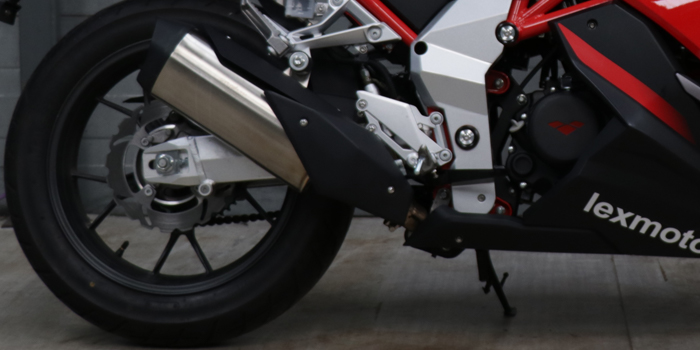
The importance of tyre pressure
Speaking of the user manual, this will also tell you the recommended pressure your tyres should be at. Again, this has all been worked out to give you the optimum performance for your vehicle, so it is really important that you regularly check the tyre pressure and keep it at the correct level.
Get yourself a tyre pressure gauge. I actually have two, a little one that fits in my pocket which isn't the most accurate but it is there wherever I go and still gives me a good indication of how my tyres are doing if I need it. I also have a larger and more accurate gauge in the garage when I want an exact reading.
I mentioned earlier that your tyres are the only contact with the road, which is perhaps obvious but even then it is really only a very small part of your tyre that will actually be touching the road at any one time - usually an area around the width of your hand in size. This is known as the contact patch and will change based on how you are leaning the bike as you ride. This is why the tyre pressure is so important, when the pressure falls too low the curve of your tyre will be affected and having once had the experience of riding a bike with way too low pressure I can tell you this is outright dangerous as in some cases the bike may not even turn properly!
Many petrol stations these days have completely free pumps that you can use to keep your pressure topped up whenever necessary. Stay on top of it and hit the garage whenever you need to.
When do your tyres need replacing?
As a basic guideline, If there is less than 1mm of tread left on any part of the tyre or if it has any type of clear damage it will need replacing. That includes punctures, slashes or cuts as well as severe weathering. Puncture repair kits may get you home in an emergency, but you will still need to replace your tyre as soon as possible.
It is also generally advised to replace your tyres once they are more than 10 years old. It will say when your tyre was manufactured on the side of it. Look for the Department of Transport code, which will begin with DOT. Usually at the end of this code will be a 4 digit number and that will be the date of production. The first two numbers will be the week and the second two the year so for example a code that reads 0320 would mean the tyre was produced in the 3rd week of 2020.
Tyre information
The size of the tyre as well as its load and speed ratings can all be found on the tyre's sidewall. The image here shows an example of a Diablo Corsa tyre from Pirelli, similar to the tyres on my own bike.
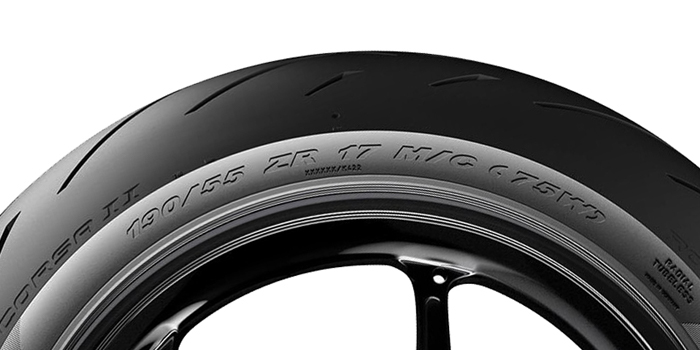
You can see the info in this example is 190/55 ZR 17 M/C (75W).
So, what does that all mean? Well let's unpack it a bit. The 190 part is the width of your tyre, so in this case 190mm. The 55 is its aspect ratio which is basically the depth of the tyre in proportion to its width. So again, in this case that means the depth is 55% of the 190mm width, which would be 104.5mm. The 17 is the rim size - 17 inches and the M/C simply means it is a motorcycle tyre.
Finally, we have the (75W) which is the load and speed ratings. The number part is the maximum load your tyre can carry, the 75 in this example translates as a 387 kilo maximum load. The letter is the maximum speed the tyre can handle. A W rating means 167mph. The fact that it is enclosed in brackets means it is capable of speeds exceeding this number but if there are no brackets then that would be the maximum.
Your own tyre may have completely different ratings depending on the size of your bike or scooter so I will put a chart below that will tell you what each of the different ratings convert to. Once again, stick with the ratings recommended by your manufacturer, these have been chosen to give the optimum performance for your individual machine.
It can be confusing dealing with tyres especially when you are starting out but hopefully some of this information will help you make good decisions and keep your tyres on the right track!
